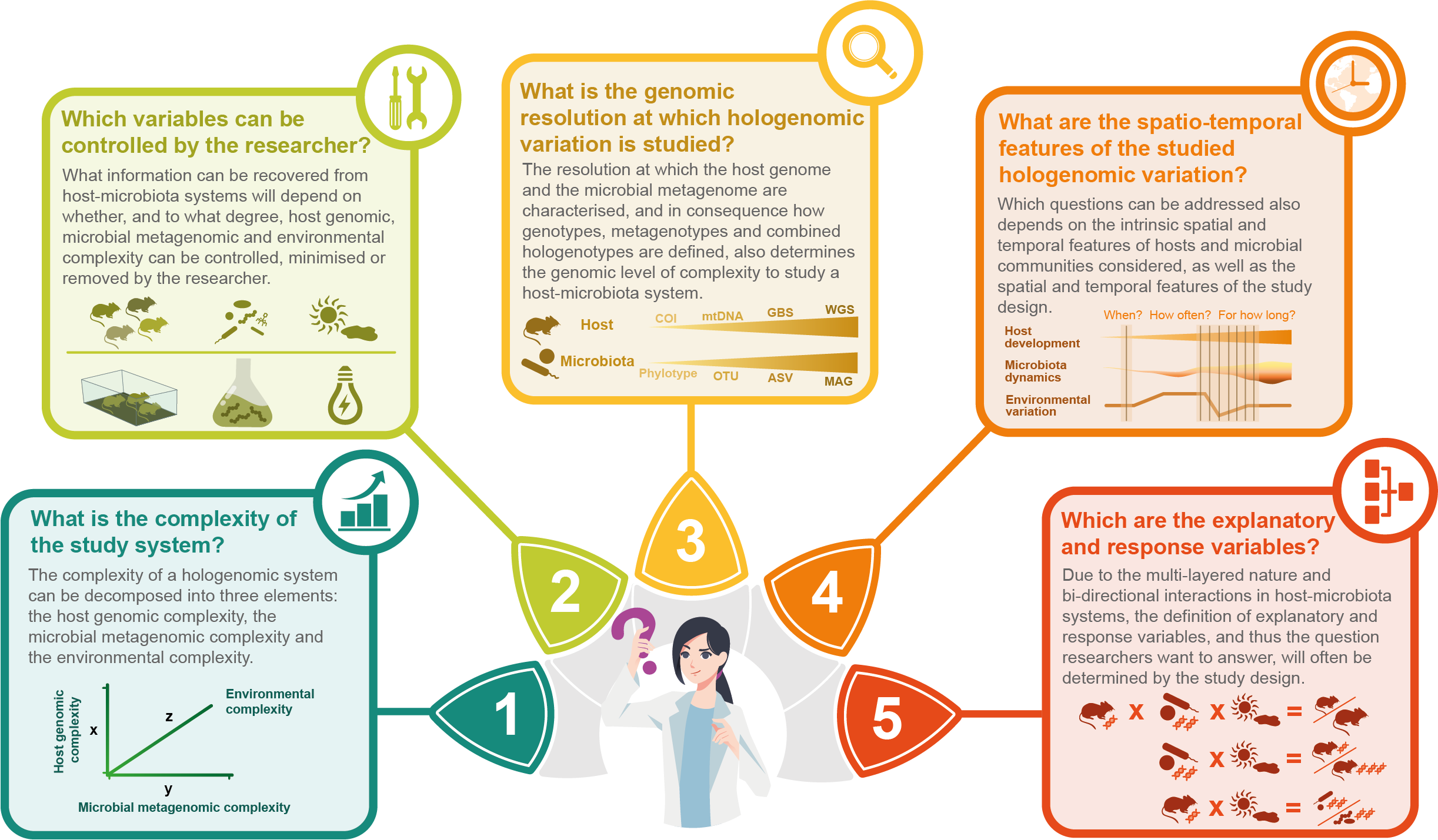2 Study design considerations
The contents of this section have been extracted and modified from the article Disentangling host–microbiota complexity through hologenomics published in Nature Reviews Genetics in 2022 by the authors of the Holo-omics Workbook.
Holo-omic approaches can be used to understand how the combined features of hosts and microorganisms shape biological processes relevant for hosts (such as adaptation), for microorganisms (such as meta-community dynamics) or both [7].
Depending on the aims and features of the study system, holo-omics can be implemented using different study designs, model systems and techniques. This landscape of possibilities is shaped around five essential questions that need to be considered when designing and interpreting hologenomic studies, which relate to five core topics:
- Hologenomic complexity
- Control of variables
- Molecular resolution
- Spatiotemporal factors
- Explanatory and response variables
